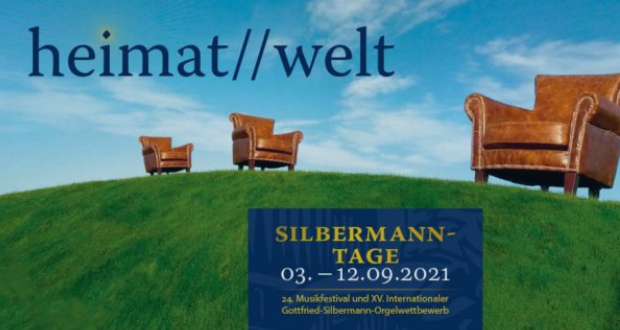Silbermann Days
Oh! Frohlockung
Concerti for two orchestras by Handel, Fasch, Richter and others
{oh!} Orkiestra Historyczna
Martyna Pastuszka, director, Arvid Gast, organ
Stadtkirche Frauenstein and livstream. 3 September 2021

Under the auspices of the Gottfried-Silbermann-Gesellschaft (the Gottfried Silbermann Society, celebrating its 30th anniversary), the 24th Silbermann Days festival (based in the region between Freiberg, Dresden and the Ore Mountains) opened on 3 September with a concert combining organ music with pieces for double orchestra. It was held, and lives-treamed, from the Stadtkirche in Frauenstein, some 33km southwest of Dresden. I am reviewing this from the live stream, which can be viewed here.
Appropriately for a festival dedicated to an organ builder, the event opened with a performance of CPE Bach’s Organ Prelude in D played by Arvid Gast on the 1873 Richard Kreutzbach organ. Although a very different organ to those that Silbermann built or Bach knew Arvid Gast made effective use of the registrations to produce a reasonably ‘authentic’ sound. Indeed, the Principal chorus seems to owe much to the earlier Saxon style of Silbermann, with its characteristic clarity and brightness.
The young Polish orchestra {oh!} Orkiestra Historyczna, directed from the violin by Martyna Pastuszka, followed with a rare performance of the Suite for 2 orchestras (Fwv K:B 1) by Johann Friedrich Fasch (1688–1758), one of the composers that led the transition from the Baroque to the Classical style. His Concerto calls two orchestras, each with 3 flutes, 3 oboes/recorders, 2 bassoons, strings and basso continuo. An Overture is followed by an Air, Bouree, Air, a pair of Minuets, Air, and a pair of Passepieds.
Arvid Gast’s elegant performance of Bach’s Organ Concerto in a, BWV 593 (a transcription of Vivaldi’s Concerto for two violins, RV 522), the {oh!} Orkiestra Historyczna gave us the Concerto con Echo by the little-known Dresden composer Johann Christoph Richter, a player of the pantaleon, an early version of the piano. The main echo passages came with flute and recorder passages in the slow movement, which was followed by a short final movement built on a series of scurrying downward scales.
After an interval, the orchestra played the Concerto for Violin and Orchestra in C minor by Johann Friedrich Schyerfogel and Gasparo Visconti, composers not known to me. There were no programme notes available to people watching the livestream, so I’ve no idea how the joint composition came about. The central Largo e staccato was particularly attractive, with some very effective lute playing. Martyna Pastuszka was the violin soloist. The {oh!} Orkiestra Historyczna have recorded this piece, and it is available online.
Bach’s monumental organ Passacaglia followed before the concert ended with Handel’s Concerto a due Cori (HWV 332), parts of which were very recognizaable from their use in other Handel works, notably And the glory of the Lord, from Messiah.
The {oh!} Orkiestra Historyczna played with a delightful flexibility of rhythm, notably in the concluding Handel Concerto. I was impressed with the direction and violin playing of Martyna Pastuszka. She is a fine example of successfully directing an orchestra (or, in this case, two) from the rather violin rather than with a conductor.
There were no programme notes available to the live stream audience, although the pieces were named at the start of each piece. There was also no information about any of the individual players in the orchestra, several of which I would otherwise have mentioned. The live event had a socially distanced audience, many of whom were featured in lingering close-up camera shots that I found inappropriately intrusive. Apart from that, the sound and most of the filming was effective and the live stream link worked well.
